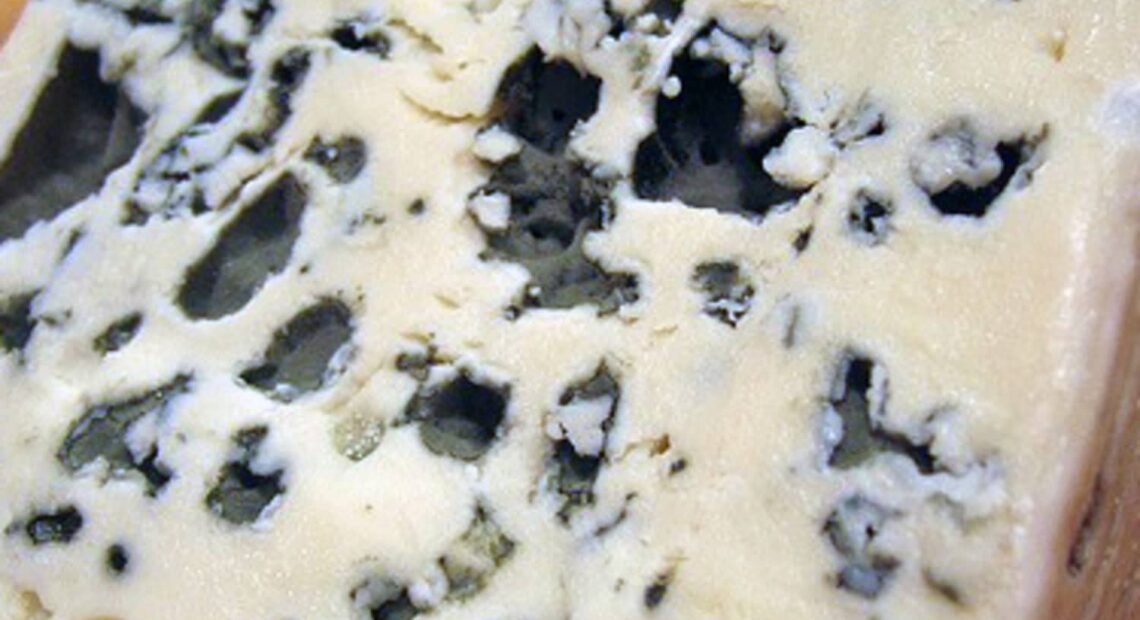Unveiling the Mystery: The Fascinating Origins of Blue Cheese

The blue in blue cheese refers to the distinctive blue or green veins that run through the cheese. These veins are formed by the presence of certain mold spores, primarily Penicillium roqueforti or Penicillium glaucum, which are intentionally introduced during the cheese-making process.
Blue cheese is typically made from cow’s, sheep’s, or goat’s milk. After the initial curdling and formation of the cheese, it is pierced with stainless steel needles to create channels for air. The mold spores are then added to the cheese, and as the cheese matures, the mold starts to grow and develop inside the air channels.
The mold requires oxygen to grow, and the air channels allow it to flourish. As it grows, it creates the characteristic blue or green veins throughout the cheese. The mold also contributes to the distinctive flavor of blue cheese, giving it a sharp, tangy taste.
The aging process of blue cheese plays a crucial role in the development of its flavor and texture. During aging, the mold continues to grow and break down the proteins and fats in the cheese, resulting in a creamy and crumbly texture.
It’s worth noting that not all blue cheeses are the same. Different varieties, such as Roquefort, Gorgonzola, and Stilton, have their own unique characteristics and flavor profiles, influenced by factors such as the specific mold strains used and the aging process employed.
Blue cheese is beloved by many for its strong, pungent flavor and is often used in salads, sauces, and dressings. It can also be enjoyed on its own or paired with fruits, nuts, or bread.
Picture Courtesy: Google/images are subject to copyright








